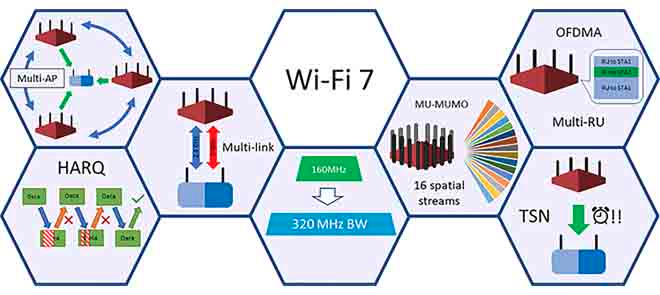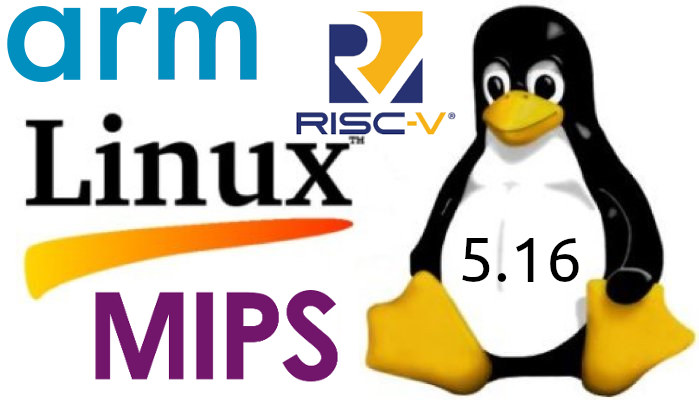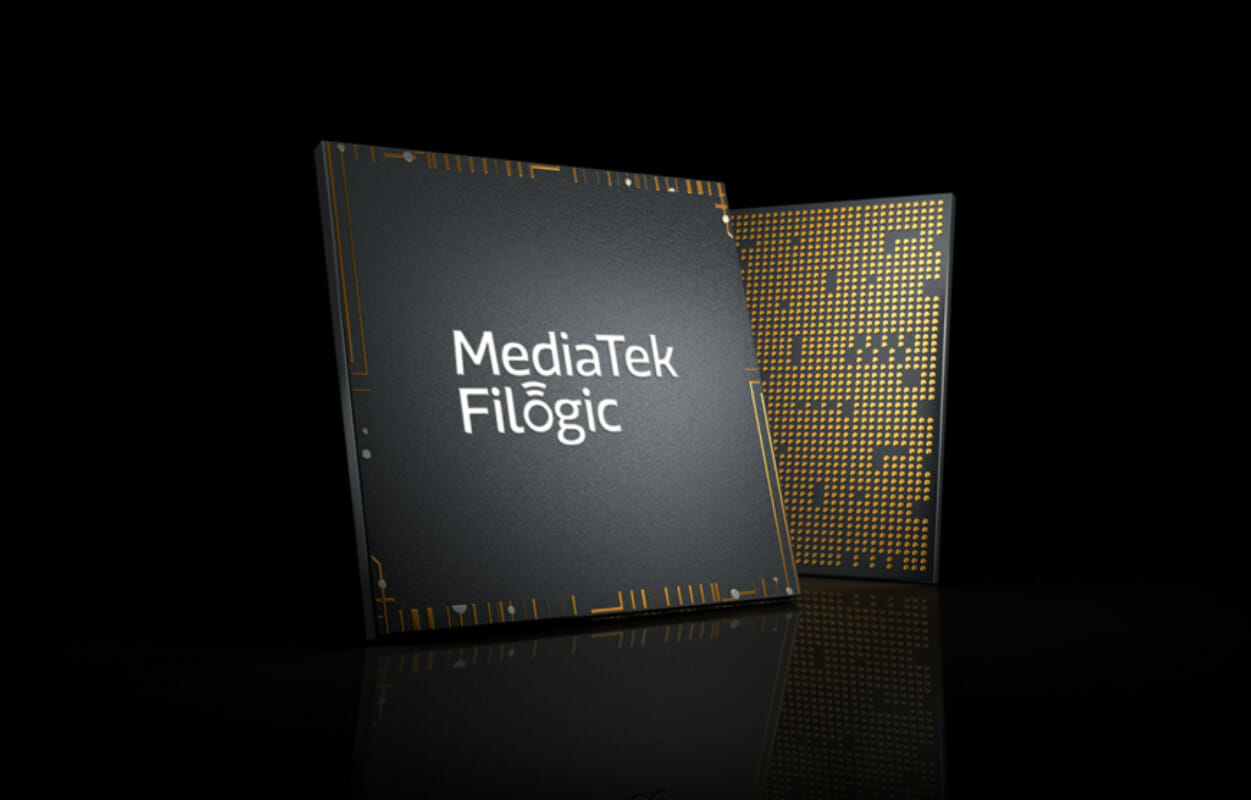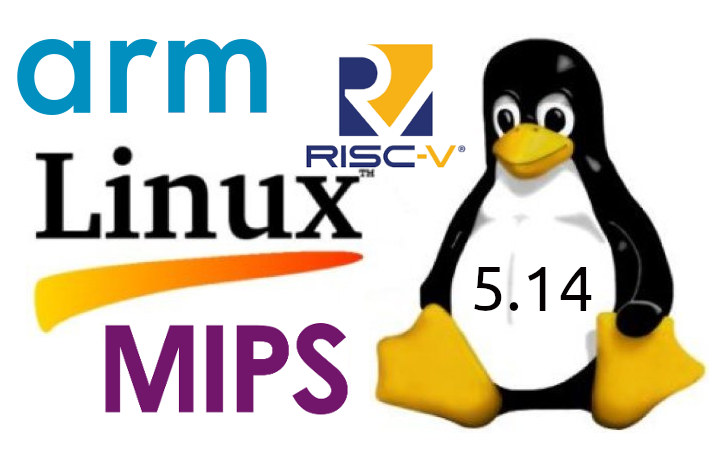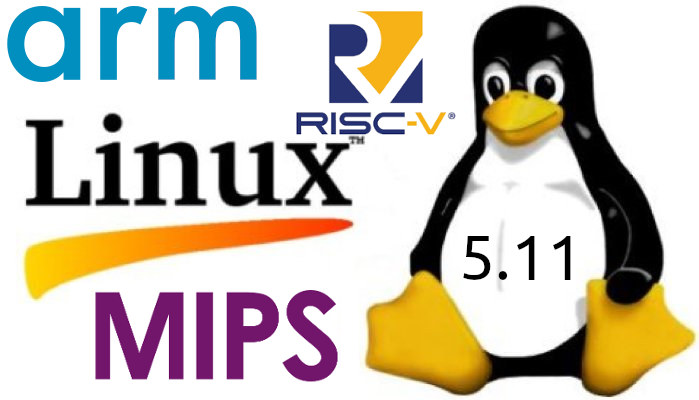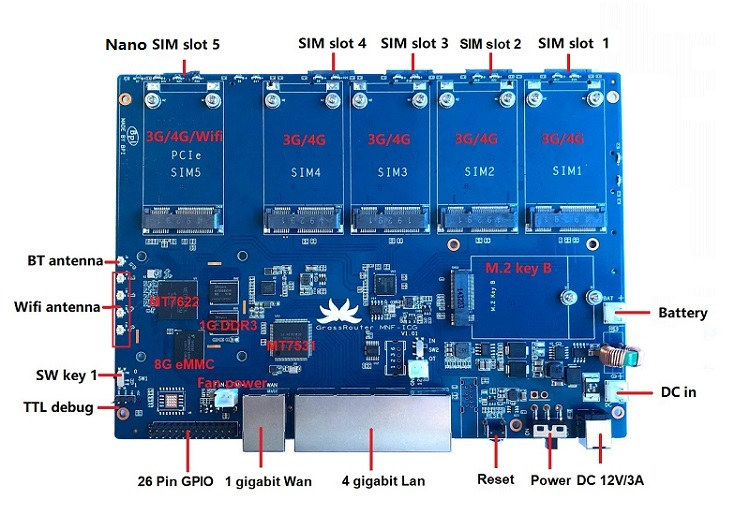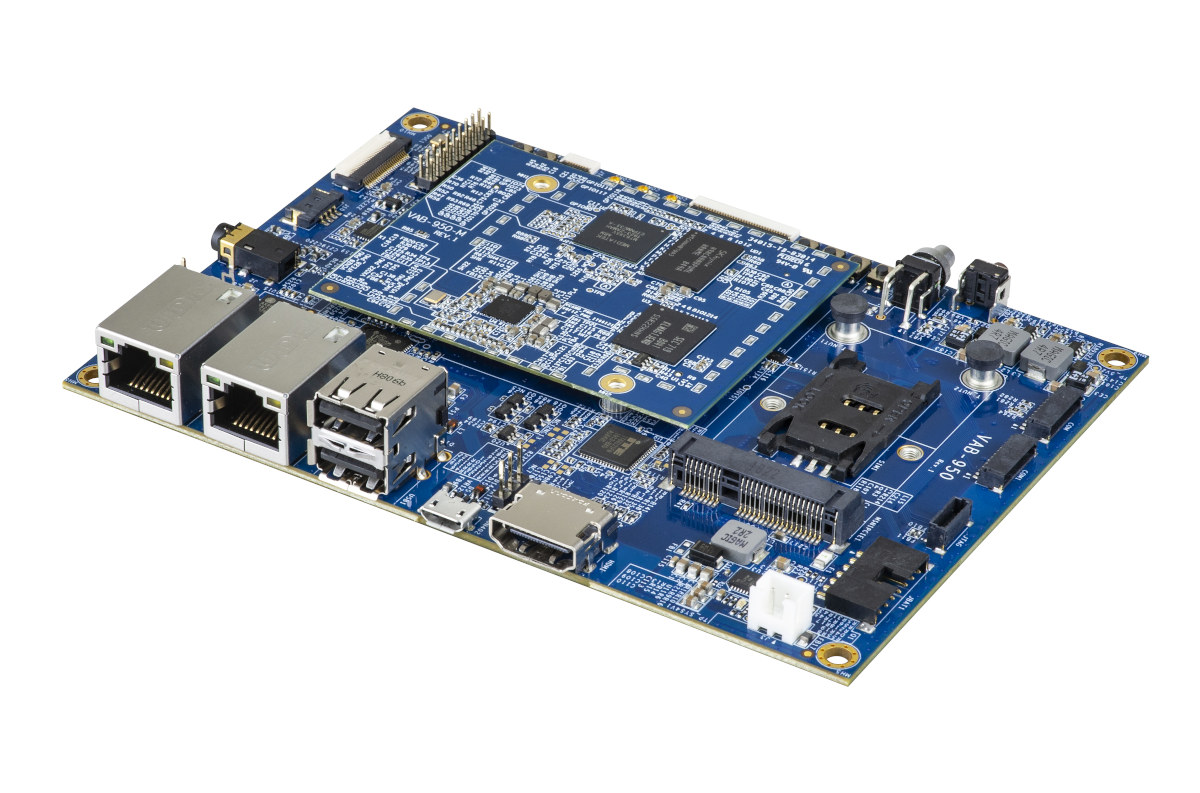I still don’t own a WiFi 6 router, but MediaTek has already started to demonstrate WiFi 7 (802.11be) to customers with solutions based on upcoming Filogic 802.11be processors which deliver “super-fast speeds and low latency transmission” and provide a “true wireline/Ethernet replacement for super high-bandwidth applications”. The company goes on to explain that Wi-Fi 7 relies on the same 2.4GHz, 5GHz, and 6GHz frequencies as WiFi 6/6E, but can still provide 2.4x higher speeds than Wi-Fi 6, even with the same number of antennas, since WiFi 7 can utilize 320Mhz channels and support 4K QAM (quadrature amplitude modulation) technology. There’s limited information about MediaTek Filogic 802.11be WiFi 7 processors since it will take a few more years before becoming available, but we can find more details in a document entitled “Current Status and Directions of IEEE 802.11be, the Future Wi-Fi 7” from IEEE Xplore. Here are some of the […]
Linux 5.16 Release – Main Changes, Arm, RISC-V and MIPS architectures
Linus Torvalds has just announced the release of Linux 5.16: Not a lot here since -rc8, which is not unexpected. We had that extra week due to the holidays, and it’s not like we had lots of last-minute things that needed to be sorted out. So this mainly contains some driver fixes (mainly networking and rdma), a cgroup credential use fix, a few core networking fixes, a couple of last-minute reverts, and some other random noise. The appended shortlog is so small that you might as well scroll through it. This obviously means that the merge window for 5.17 opens tomorrow, and I’m happy to say I already have several pending early pull requests. I wish I had even more, because this merge window is going to be somewhat painful due to unfortunate travel for family reasons. So I’ll be doing most of it on the road on a laptop […]
$55 Amazon Fire TV Stick 4K Max supports 4K AV1 videos, Wi-Fi 6
Amazon will release new Fire TV Sticks from time to time, and most are only mildly interesting, but the Amazon Fire TV Stick TV 4K Max brings two new interesting features with 4K AV1 video playback, as well as Wi-Fi 6 connectivity which should prevent buffering for higher bitrate 4K videos. The new device builds upon the MediaTek MT8695 based Amazon Fire TV Stick 4K released in 2018, with a more powerful MediaTek MT8696 processor clocked at 1.8 GHz, more memory (2GB vs 1.5 GB), and the same 8GB of storage for the Android 9 based Amazon Fire 7 OS. Amazon claims the new stick is 40% faster, despite a frequency bump from 1.7 GHz to 1.8 GHz only, and MT8696 relies on Cortex-A73 cores Cortex-A55 cores (See comments), instead of the Cortex-A53 cores found in MediaTek MT8695, so the performance improvement probably refers to the faster GPU. Amazon Fire […]
MediaTek unveils Filogic 830 & Filogic 630 WiFi 6/6E chips
MediaTek has recently introduced the Filogic connectivity family with two parts, namely the Filogic 830 Wi-Fi 6/6E system-on-chip (SoC), and the Filogic 630 Wi-Fi 6E network interface card (NIC) solutions. The WiFi 6/6E tri-band (2.4, 5, and 6 GHz) chips are Wi-Fi Alliance EasyMesh certified, and designed for home, business, and enterprise router and repeater devices, home automation bridges, IoT gateways, as well as consumer devices such as laptops, TVs, IP cameras, etc… The MediaTek Filogic 830 is a complete 12nm SoC with a quad-core Cortex-A53 processor clocked at up to 2 GHz per core delivering over 18,000 DMIPs, hardware acceleration engines for Wi-Fi offloading and networking, dual 4×4 Wi-Fi 6/6E for up to 6Gbps connectivity, two 2.5Gbps Ethernet interfaces, and various other peripheral interfaces, but MediaTek did not provide any details about those. The company also says the chip includes FastPath low latency technology for gaming and AR/VR applications. […]
Linux 5.14 Release – Main changes, Arm, MIPS, and RISC-V architectures
Linus Torvalds has just announced Linux 5.14 release which happens to almost coincide with the anniversary of the initial announcement of the “small” project on August 25, 1991, about 30 years ago. Here’s Linux 5.14’s announcement: So I realize you must all still be busy with all the galas and fancy balls and all the other 30th anniversary events, but at some point you must be getting tired of the constant glitz, the fireworks, and the champagne. That ball gown or tailcoat isn’t the most comfortable thing, either. The celebrations will go on for a few more weeks yet, but you all may just need a breather from them. And when that happens, I have just the thing for you – a new kernel release to test and enjoy. Because 5.14 is out there, just waiting for you to kick the tires and remind yourself what all the festivities are […]
Linux 5.11 Release – Main Changes, Arm, MIPS & RISC-V Architectures
Linus Torvalds has released Linux 5.11 just in time for… “Valentine’s Day”: Nothing unexpected or particularly scary happened this week, so here we are – with 5.11 tagged and pushed out. In fact, it’s a smaller-than-average set of commits from rc7 to final, which makes me happy. And I already have several pull requests lined up for tomorrow, so we’re all set for the merge window to start. But in the meantime – and yes, I know it’s Valentine’s Day here in the US – maybe give this release a good testing before you go back and play with development kernels. All right? Because I’m sure your SO will understand. Linus Last time around, Linux 5.10 was an LTS release that added EXT-4 performance enhancements, improved post-Spectre performance, as well as the enablement of BCM2711 (Raspberry Pi 4) display pipeline, among other many changes. Some of the notable changes in […]
Cellular gateway board takes up to five 4G mini PCIe cards, one 5G M.2 module, seven SIM cards
One Banana Pi customer asked them to customize Banana Pi BPI-R64 Linux router board based on MediaTek MT7622 WiFi processor as part of their “BPI 4.0 server” OEM/ODM customization service. Specifically, they were asked to design a cellular gateway board with the same five Gigabit Ethernet ports as on the original board, but adding five mini PCIe sockets and SIM card slots for 3G/4G cards, and one M.2 socket plus two SIM cards for a 5G module. Here’s the result! Banana Pi “GrassRouter” cellular gateway board specifications: SoC – MediaTek MT7622E dual-core ARM Cortex-A53 processor @ 1.35GHz System Memory – 1 or 2GB RAM Storage – 8GB eMMC flash, MicroSD card slot Connectivity Cellular 1x 5G via M.2 Key-B module (USB 3.0 or PCIe bus), 2x SIM card slots. Up to 5x 3G/4G LTE via mPCIe expansion socket, 5x SIM card slots Ethernet – 5x Gigabit Ethernet ports (4x LAN […]
VIA VAB-950 SBC Features MediaTek i500 SoC for AIoT Applications
While MediaTek is better known for their mobile SoCs and they also offers processors made for AIoT (AI + IoT) applications such as MediaTek i700, i500 or i300 SoCs. We only covered a few development / evaluation boards so far, with Pumpkin i500 SBC or Innocom SB30 EVK, but we’ve now got another one with VIA VAB-950 single board computer equipped with MediaTek i500 AIoT octa-core processor, up to 4GB LPDDR4, 16GB flash storage, HDMI, dual Fast Ethernet, dual-band 802.11ac Wi-Fi, Bluetooth 5.0, and support for 4G LTE cellular connectivity. VAB-950 SBC specifications: SOM-9X50 system-on-module SoC – MediaTek i500 octa-core processor with 4x Cortex-A73 @ 2.0GHz, 4x Cortex-A53 @ 2.0GHz Arm Mali-G72 GPU up to 800 MHz with support for OpenGL ES 3.0, OpenCL ES 1.1, and Vulkan 1.0 VPU for 1080p30 H.264/H.265 decoding 2x Cadence Tensilica Vision P6 DSPs System Memory – 2GB or 4GB LPDDR4 SDRAM Storage – […]


